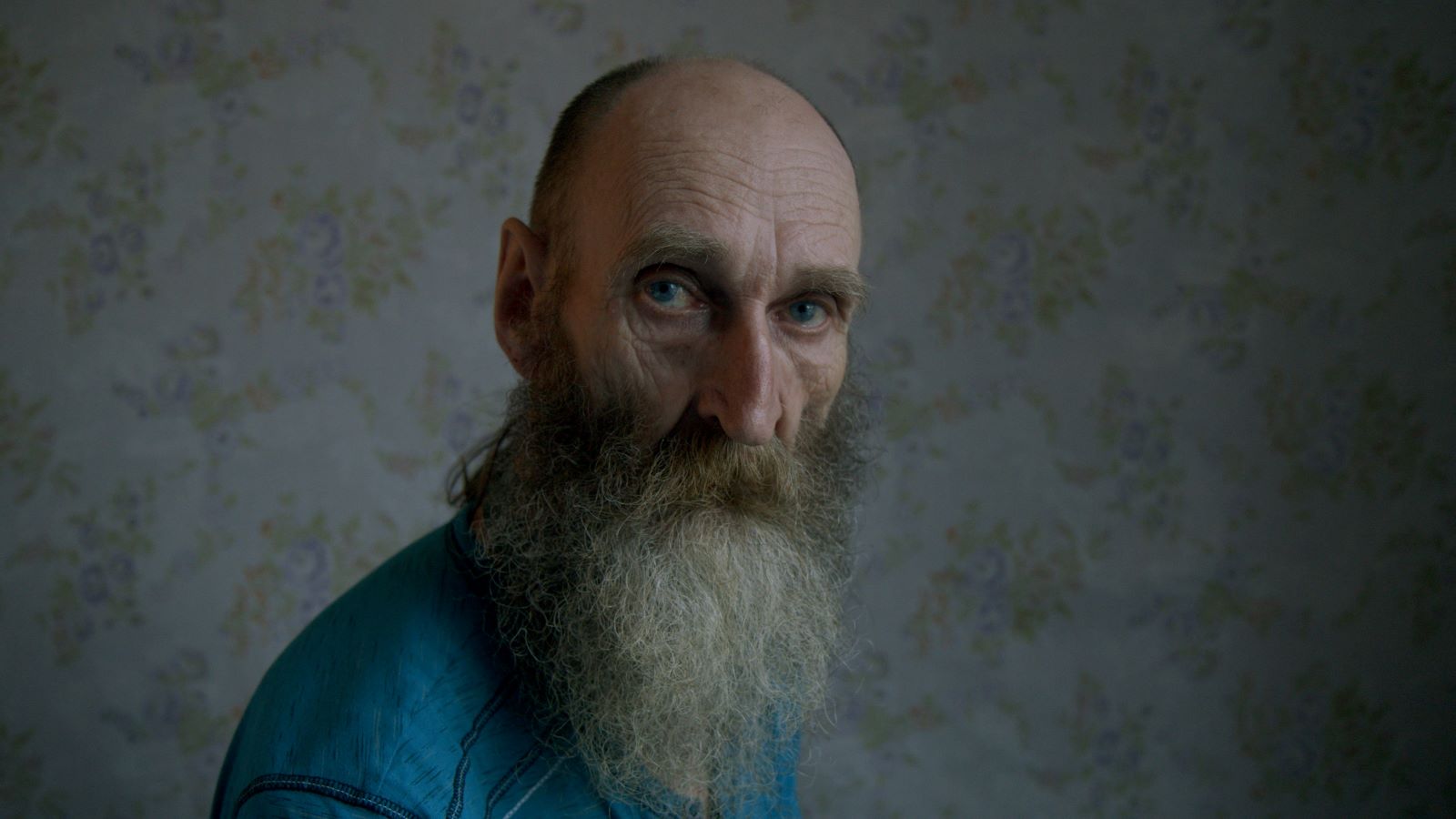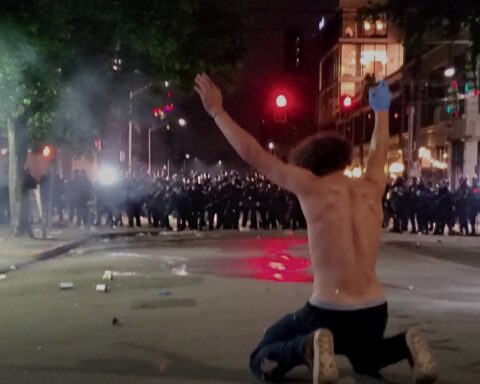A Man Imagined
(Canada, 95 min.)
Dir. Brian M. Cassidy and Melanie Shatzky
The opening shots of A Man Imagined are frank images of nature. Their calm beauty is soon interrupted by the sights and sounds of traffic, the harsh reality of urban life. Lloyd is introduced, our guide to the strange contrasts and contradictions of being homeless in Montreal.
This is the latest non-fiction work from the team of Brian M. Cassidy and Melanie Shatzky, who are renowned for their experimental takes on genre filmmaking. Here, they offer us an ambiguous portrait of Lloyd, a man clearly still struggling with demons as he attempts to navigate through the streets and seasons of the city.
The film is ostensibly devoid of structure, reflecting the life Lloyd lives. He picks up objects on the street–a damaged coffee maker, a toy horse, shocking pink curtains–and attempts to sell them to passersby. Many are understandably not interested in what he’s hawking but offer him some change instead.
These observational moments are interrupted by intense snow storms, showing us the harsh reality of Lloyd’s battle against the elements. Cassidy and Shatzky keenly shift gears, taking us from quiet observation to Lloyd’s murky statements to the poetic. At one point, Lloyd stops by a grill spewing what appears to be exhaust from a clothes dryer; he takes it in, relishing the heat. He walks by mannequins sporting elaborate wedding gowns, the uniforms of celebrations of a bright, promising future, and a truck rolls by with a massive ad for a pristine kitchen on its side.
Then, there’s the central mystery: what happened to Lloyd? What is his backstory? Cassidy and Shatzky can be heard asking a series of questions. His parents were murdered, he insists, though it’s unclear after further questioning if this is something he’s imagined. He has slept in a dumpster at times, and shows us his faded tattoo as he recalls getting an STD from a girlfriend. He reveals that he has pulled much of the hair on his head out. Lloyd’s coping mechanisms seem fraught, at best. “What makes you happy?” he is asked, to which he responds, “Talking to a person.”
Cassidy and Shatzky’s strengths as filmmakers are in plain sight here: they offer none of the prescriptive bromides so often associated with documentary representations of homelessness. They avoid the pitfalls of poverty porn by rejecting simplicity and instead show us the hopelessness and confusion, which Lloyd is suffering.
A moment of beauty–Lloyd sleeping out in nature, where a squirrel visits–is soon broken up by worms that are crawling on his mattress. A Man Imagined evokes the ephemeral nature of life itself. When Lloyd is asked how he’d like to be remembered, he answers without pause, “I don’t want to be remembered. I had a hard life.”
It’s a haunting punctuation mark to a harrowing, painful film. A Man Imagined is laudable precisely because the film doesn’t attempt to explain away the mystery. Like many people living on the street, or moving from shelter to shelter, Lloyd’s existence is about a combination of societal failure, personal anguish and mental health. The film’s ambiguity is a key part of its beauty and strength.
A Man Imagined has its North American premiere at DOXA on May 8.













